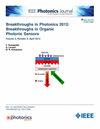PV Polaris -自动化PV系统方向预测
IF 2.4
4区 工程技术
Q3 ENGINEERING, ELECTRICAL & ELECTRONIC
引用次数: 0
摘要
光伏系统的方向是发电和产量预测的重要参数。然而,真正的方向往往是未知的。手动测量方向非常耗时。本研究引入了一种基于蒙特卡罗搜索的自动PV Polaris算法,该算法能够在18秒内预测系统的方向,倾角小于2°,方位角小于4°。就精度而言,PV北极星优于其他方法,如用倾斜补偿罗盘测量或从卫星图像预测。该算法适用于模块级、串级和逆变级,只需要功率监测数据和近似坐标作为输入。此外,该算法还可以根据给定的方向反向估计系统的坐标。利用这种取向预测方法,可以计算出因取向不理想而造成的年产量损失。对于我们所研究的光伏系统,我们发现如果光伏系统的方向进行优化,可以实现每年2.3%到10.3%的产量增长。本文章由计算机程序翻译,如有差异,请以英文原文为准。
PV Polaris – Automated PV System Orientation Prediction
The orientation of a photovoltaic system is an important parameter for power generation and yield predictions. Yet often, the real orientation is unknown. Measuring the orientation manually is time-consuming. This study introduces an automated Monte Carlo Search based algorithm called PV Polaris which is capable of predicting the systems orientation within 18 s, with uncertainties of less than 2° in tilt and 4° in azimuth. In terms of accuracy, PV Polaris outperforms other methods such as measurements with a tilt compensated compass or predictions from satellite images. Applicable at module, string and inverter levels, the algorithm only requires power monitoring data as well as an approximate coordinate as input. Additionally, the algorithm can operate inversely to estimate the system's coordinates based on a given orientation. By using this orientation prediction, it was possible to calculate the yearly yield loss due to non-ideal orientation. For photovoltaic systems we investigated, we found that yearly yield increases between 2.3% to 10.3% could be achieved if the PV systems orientation would be optimized.
求助全文
通过发布文献求助,成功后即可免费获取论文全文。
去求助
来源期刊

IEEE Photonics Journal
ENGINEERING, ELECTRICAL & ELECTRONIC-OPTICS
CiteScore
4.50
自引率
8.30%
发文量
489
审稿时长
1.4 months
期刊介绍:
Breakthroughs in the generation of light and in its control and utilization have given rise to the field of Photonics, a rapidly expanding area of science and technology with major technological and economic impact. Photonics integrates quantum electronics and optics to accelerate progress in the generation of novel photon sources and in their utilization in emerging applications at the micro and nano scales spanning from the far-infrared/THz to the x-ray region of the electromagnetic spectrum. IEEE Photonics Journal is an online-only journal dedicated to the rapid disclosure of top-quality peer-reviewed research at the forefront of all areas of photonics. Contributions addressing issues ranging from fundamental understanding to emerging technologies and applications are within the scope of the Journal. The Journal includes topics in: Photon sources from far infrared to X-rays, Photonics materials and engineered photonic structures, Integrated optics and optoelectronic, Ultrafast, attosecond, high field and short wavelength photonics, Biophotonics, including DNA photonics, Nanophotonics, Magnetophotonics, Fundamentals of light propagation and interaction; nonlinear effects, Optical data storage, Fiber optics and optical communications devices, systems, and technologies, Micro Opto Electro Mechanical Systems (MOEMS), Microwave photonics, Optical Sensors.
 求助内容:
求助内容: 应助结果提醒方式:
应助结果提醒方式:


